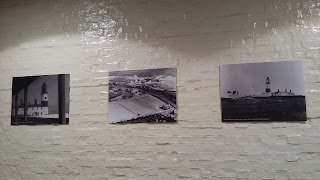This is Merrill, the latest Hedgehog to be released into the Coastal Park by our friends at Prickly Pals North East. He's been looked after by one of their dedicated volunteers over the winter period having been found poorly and underweight, conditions which meant he would never have survived hibernation. We've had close ties to Prickly Pals for a number of years now, a lot of their volunteers are members of the Coastal Conservation Group which are based here at the Coastal Park. It's a fantastic group, they take in sick, injured and orphaned hogs and nurse them back to health until they are well enough to be released back to the wild. It's not an easy job either, some hogs need round the clock assistance, even through the night. The dedication of the volunteers is incredible. When the hogs are ready they are released into as safe an area as possible, which is where the Coastal Park comes in. There's lots of areas off limits to the public so the Hedgehogs can make a home in the park with relatively no interference. There's been lots of hogs released in the past few years and we now have a fantastically healthy population on the property which is great news as their numbers have dropped drastically in the UK. Here in the Coastal Park, Hedgehogs are doing mighty fine!
Hedgehog City!
Recent releases
A lovely healthy wild Hedgehog













































